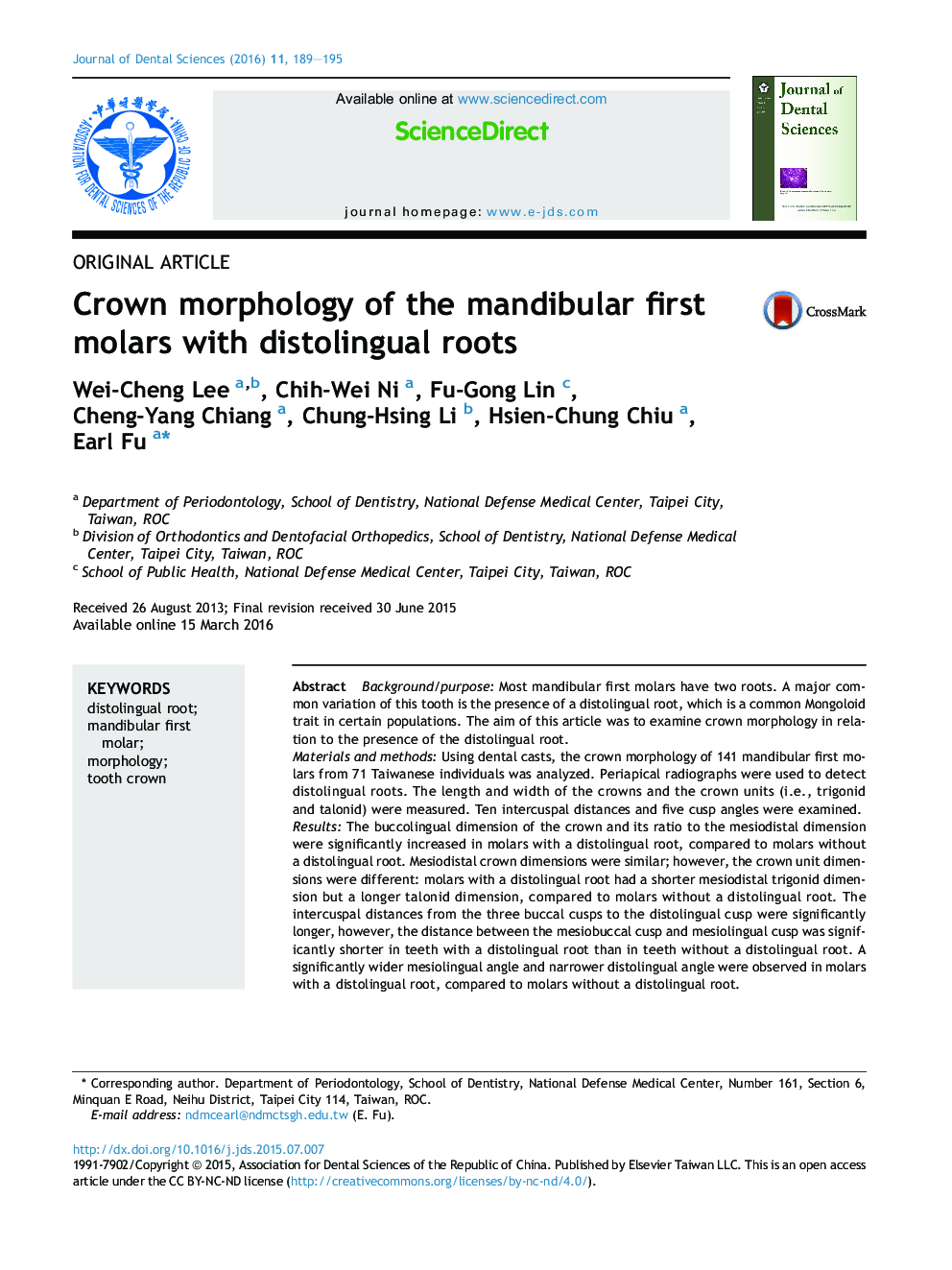| کد مقاله | کد نشریه | سال انتشار | مقاله انگلیسی | نسخه تمام متن |
|---|---|---|---|---|
| 3145448 | 1197077 | 2016 | 7 صفحه PDF | دانلود رایگان |
Background/purposeMost mandibular first molars have two roots. A major common variation of this tooth is the presence of a distolingual root, which is a common Mongoloid trait in certain populations. The aim of this article was to examine crown morphology in relation to the presence of the distolingual root.Materials and methodsUsing dental casts, the crown morphology of 141 mandibular first molars from 71 Taiwanese individuals was analyzed. Periapical radiographs were used to detect distolingual roots. The length and width of the crowns and the crown units (i.e., trigonid and talonid) were measured. Ten intercuspal distances and five cusp angles were examined.ResultsThe buccolingual dimension of the crown and its ratio to the mesiodistal dimension were significantly increased in molars with a distolingual root, compared to molars without a distolingual root. Mesiodistal crown dimensions were similar; however, the crown unit dimensions were different: molars with a distolingual root had a shorter mesiodistal trigonid dimension but a longer talonid dimension, compared to molars without a distolingual root. The intercuspal distances from the three buccal cusps to the distolingual cusp were significantly longer, however, the distance between the mesiobuccal cusp and mesiolingual cusp was significantly shorter in teeth with a distolingual root than in teeth without a distolingual root. A significantly wider mesiolingual angle and narrower distolingual angle were observed in molars with a distolingual root, compared to molars without a distolingual root.ConclusionThe presence of a distolingual root significantly increased the buccolingual dimension of the crown and the location of distolingual cusp is significantly closer to the lingual side.
Journal: Journal of Dental Sciences - Volume 11, Issue 2, June 2016, Pages 189–195
